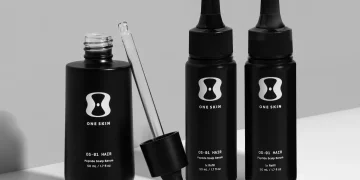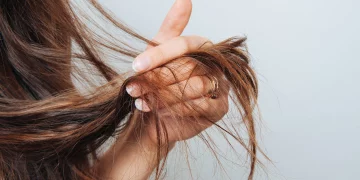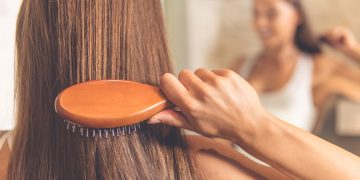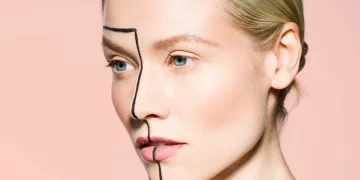For decades, grey hair symbolized aging, maturity, and the slow fading of youth. But today, that stereotype has been shattered. Silver, grey, and metallic-white tones have become powerful fashion statements—celebrated by celebrities, influencers, hairstylists, and people of all ages. What used to be concealed is now embraced. What once felt like a burden has become a style revolution.
From natural greying to full-on silver dye jobs, this trend blends pigment science, advanced toning care, and a bold cultural shift around beauty and aging. But why exactly has silver hair become so iconic? How does the science behind pigment loss influence style? And what does it take to maintain shimmering, cool-toned, runway-ready grey?
This in-depth exploration unpacks the modern silver hair movement, revealing how chemistry, artistry, and self-confidence have turned grey into one of the most glamorous looks of our time.
Why Is Silver Hair Trending Like Never Before?
Just a decade ago, even a hint of grey had people rushing to cover it. Today:
- Young trendsetters request icy silver shades at salons.
- Mature adults embrace natural greying rather than dyeing over it.
- High-fashion editorials showcase metallic-grey waves as luxury aesthetics.
- Social media fuels tutorials on achieving frosted silver or smoky grey blends.
Silver hair has become a symbol of rebellion, sophistication, confidence, and individuality.
Key Reasons Behind the Trend
1. Cultural shifts in aging
Society is redefining what it means to age. Instead of hiding signs of maturity, people are celebrating them as markers of identity and grace.
2. High-fashion influence
Runways began showcasing silver hair in the early 2010s. Designers leaned into cool-toned aesthetics, influencing mainstream beauty.
3. Improved dye technology
Bleaching and toning techniques can now create silver shades without destroying hair.
4. Social media virality
Instagram, TikTok, and Pinterest turned silver into a global aesthetic phenomenon, inspiring color experiments across all ages.
How Does Grey Hair Naturally Occur? (Pigment Theory Explained)
To understand the silver trend, we need to understand why hair turns grey at all. At the root of the color change is melanin, the pigment responsible for all natural hair colors—from deep espresso brown to strawberry blonde.
Melanin Basics
Two types of melanin determine hair color:
- Eumelanin (brown/black pigment)
- Pheomelanin (red/yellow pigment)
Every strand’s exact shade depends on:
- The ratio of these pigments
- How much pigment is produced by melanocytes
The Science of Going Grey
Greying occurs when:
- Melanocyte activity slows
- Melanin production becomes irregular
- Eventually, pigment stops forming entirely
This results in:
- Translucent hair fibers that appear white
- Hair mixing with pigmented strands, creating a grey effect
- Texture changes, often making hair wirier or coarser
Oxidative Stress and Melanocyte Aging
Hydrogen peroxide naturally builds up in hair follicles over time. Reduced catalase enzyme activity means peroxide isn’t broken down efficiently, causing:
- Melanin-producing cells to degrade
- Pigment to fade gradually
This biochemical shift explains why some people grey earlier, why stress can accelerate greying, and why the silver tone varies between individuals.
Why Are People Choosing to Go “Silver On Purpose”?
Natural greying is just one path to silver hair. The modern trend also includes younger adults intentionally dyeing their hair metallic grey.
The Appeal of Artificial Silver
1. Futuristic and editorial
Silver reads high-fashion, cyber-chic, and ethereal.
2. Universally flattering tone
Cool silver shades complement a wide range of skin undertones, especially when balanced with soft makeup.
3. Versatility
Silver can be:
- Icy
- Smoky
- Charcoal
- Lavender-infused
- Pearl-toned
- Blue-steel
4. Statement-making
It communicates boldness and individuality in a world saturated with traditional color palettes.
5. Symbolic empowerment
Choosing silver—natural or dyed—can feel like embracing time, identity, or artistic expression.
How Hard Is It to Achieve Silver Hair?
Going silver is famously one of the most demanding color transformations. Whether achieving natural-looking grey or a striking metallic finish, it requires:
- High-level bleaching
- Careful neutralization of brass
- Expert toning technique
Step 1 — Lifting the Hair to Pale Yellow
To accept silver pigment fully, hair must reach:
- Level 10 blonde (almost white)
- Free from orange or gold undertones
- Evenly lifted from roots to ends
This process can take multiple sessions, especially for dark or previously dyed hair.
Step 2 — Toning to Cancel Warmth
Toners rely on color theory:
- Violet neutralizes yellow
- Blue neutralizes orange
- Blue-violet corrects gold
Silver toners combine:
- Blue + violet + grey pigments
- Sometimes pearl or ash infusions
Step 3 — Depositing Silver Pigment
Finally, stylists layer on:
- Metallic dyes
- Demi-permanent toners
- Direct pigments
- Glosses
Smart pigment systems ensure even tone on porous or damaged strands.

What Does It Really Take to Maintain Silver Hair?
Silver hair—natural or dyed—needs intentional care to preserve its cool elegance.
1. Toning Care Is Essential
Silver is prone to yellowing due to:
- Pollution
- UV exposure
- Hard water minerals
- Heat styling oxidation
To counteract this:
- Purple shampoo once weekly
- Blue-violet mask for deeper corrections
- Gloss treatments every 3–6 weeks
2. Hydration + Strength Care
Grey hair often has:
- Less sebum
- More dryness
- Higher porosity
Key care routines include:
- Bond-building treatments
- Moisture-rich masks
- Lightweight oils
- Leave-in UV protectants
3. Heat Styling with Protection
Silver tones fade faster with heat.
- Always apply thermal protectant
- Use lower temperature settings
- Limit hot-tool frequency
4. Mineral Buildup Prevention
Install a shower filter or use a clarifying wash monthly to prevent yellowing.
Aging with Style: Why Silver Hair Feels Empowering
The rise of grey hair as a beauty trend speaks to a broader cultural evolution.
People Are Rejecting Age Shame
Instead of hiding grey, many now embrace it as:
- A personal milestone
- A symbol of authenticity
- A marker of wisdom
Silver Hair as a Confidence Statement
Wearing grey with intention—styled, toned, nourished—transforms it from a sign of aging into a fashion-forward choice.
It communicates:
- Strength
- Self-awareness
- Elegance
- Creative identity
Representation Matters
Public figures proudly wearing their grey—actors, models, news anchors, and influencers—have normalized and glamorized the look.
This visibility has helped countless others see beauty in their natural greying process.
How to Transition to Grey Gracefully
Not everyone wants an abrupt silver transformation. Many people seek a seamless, natural-looking evolution.
Popular transition techniques:
- Grey blending
- Salt-and-pepper highlights
- Reverse balayage with cool tones
- Root smudging to soften demarcation lines
- Silver foils mixed with natural pigment
This personalized approach embraces individuality while keeping the look polished and modern.
Is Silver Hair Here to Stay?
Absolutely. The trend is not fading—if anything, it is becoming more sophisticated.
Why Silver Will Remain Popular
- It aligns with modern aesthetic preferences toward minimalism, cool tones, and metallics.
- It supports the broader movement of aging with pride.
- It offers endless shade variations, keeping the trend fresh.
- Dye technology continues to produce better silver pigments with reduced damage.
Silver hair sits at the intersection of science, style, and identity—making it both timely and timeless.












































